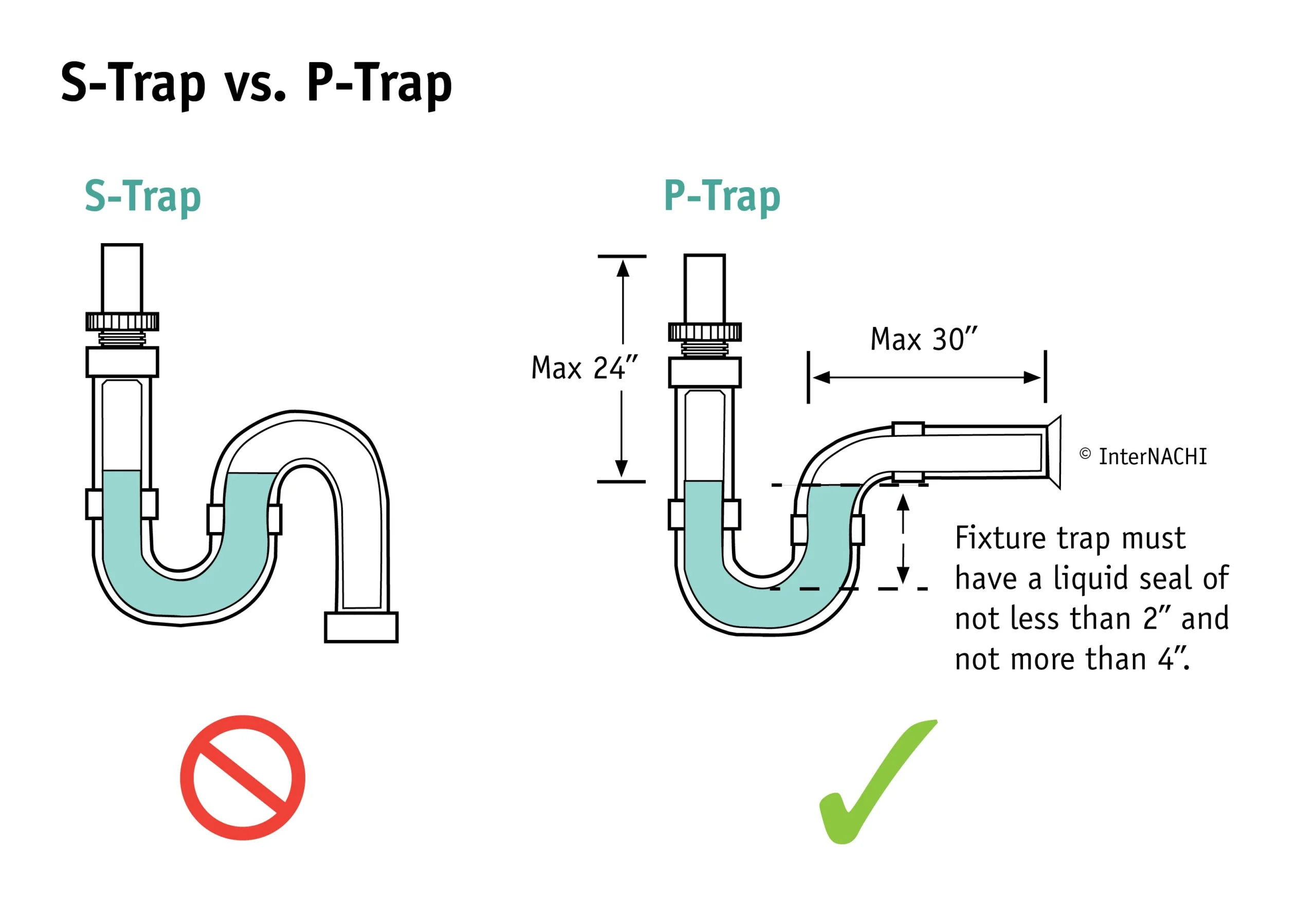In the realm of plumbing, traps are essential components that prevent sewer gases from entering the home while allowing wastewater to flow out. Among the most commonly used traps are the S Trap vs. P Trap and the P trap. Both serve the same fundamental purpose but differ in design and application. This guide explores the differences between S traps and P traps, highlighting their respective pros and cons to help you make an informed decision for your plumbing needs.
Understanding S Traps and P Traps
S Trap: The S trap is named for its shape, which resembles the letter “S.” It is typically used in older plumbing systems and is designed to create a water seal that blocks sewer gases from entering the home. The trap’s design includes a bend in the pipe that holds a small amount of water, which acts as a barrier.
P Trap: The P trap, on the other hand, is named for its shape, resembling the letter “P.” It is more commonly used in modern plumbing systems. The P trap has a similar function to the S Trap vs. P Trap but features a different design that includes a horizontal section before the bend. This design helps to maintain the water seal more effectively and is less prone to issues compared to the S Trap vs. P Trap
Pros and Cons of S Traps
Pros
- Simple Design: The S trap has a straightforward design, which makes it easy to install and understand. Its simplicity can be beneficial for basic plumbing systems.
- Cost-Effective: Generally, S traps are less expensive to manufacture and install compared to P traps. This can make them a more cost-effective option for some applications.
- Effective Water Seal: When functioning correctly, S traps can provide a reliable water seal to prevent sewer gases from entering the home.
Cons
- Trap Seal Loss: One of the major drawbacks of S traps is their tendency to lose the water seal over time. This can occur due to siphoning effects, where the water in the trap is drawn out, allowing sewer gases to escape. This problem is particularly prevalent in systems with inadequate venting.
- Code Compliance Issues: Many building codes and plumbing regulations have moved away from the use of S traps in favor of P traps. In some jurisdictions, S traps are no longer permitted due to their potential to cause problems with trap seal loss.
- Clogging Issues: S traps can be more prone to clogs because the shape of the trap can allow debris to accumulate more easily. This can lead to frequent maintenance and potential blockages.
Pros and Cons of P Traps
Pros
- Stable Water Seal: The P trap design is less prone to losing its water seal compared to the S trap.
- Code Compliance: P traps are widely accepted by modern plumbing codes and regulations.
- This can result in fewer maintenance issues and a more reliable system.
Cons
- More Complex Installation: The P trap’s design is slightly more complex than that of the S trap. It requires precise alignment and installation to ensure that it functions correctly. This can sometimes lead to higher installation costs.
- This can complicate the installation process in certain situations.
- However, this cost is often justified by their improved performance and compliance with modern codes.
Choosing Between S Trap and P Trap
When deciding between an S trap and a P trap, several factors should be considered:
- Building Codes and Regulations: Always check local building codes and plumbing regulations before making a decision. Many areas require the use of P traps due to their enhanced performance and reliability.
- In some cases, retrofitting an S trap to a P trap may be necessary to meet code requirements.
- Maintenance and Longevity: Evaluate the long-term maintenance needs and potential issues associated with each type of trap.
- Cost Considerations: Consider the initial cost of installation and potential long-term maintenance costs.
Conclusion
Both S traps and P traps play crucial roles in plumbing systems, but their designs and performance characteristics differ significantly.

Leave a Reply